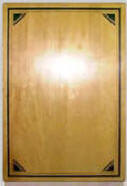| |
HISTORY
 The
Peruvian Cajon created by black slaves in Peru during the Spanish
colonization because of the prohibition of playing their drums by
the Catholic Religion since they were considered as heathen
instruments. The
Peruvian Cajon created by black slaves in Peru during the Spanish
colonization because of the prohibition of playing their drums by
the Catholic Religion since they were considered as heathen
instruments.
The
Peruvian Viceroyalty also banned them to avoid the communication
between black people (talking drums)
Every drum found was burnt. Percussion was the divine factor of
African music so the slaves tried to find an instruments to express
themselves. The black slaves saw a percussion instrument in the
boxes used to carry goods and they played them in their sacred
ceremonies and different artistic demonstrations.
Methodology:
I PROVIDE PC MUSIC
SOFTWARE FOR WINDOWS 64 BITS FOR RHYTHM READING WITH REAL CAJON
SOUNDS, WHICH MAKES LEARNING EASIER.
YOU CAN LEARN THE RHYTHMS BY LISTENING TO THEM AS THEY SOUND, YOU
CAN LEARN TO READ THEM BY MUSIC AND PLAY THEM AND YOU CAN PLAY THE
RHYTHMS AT THE SAME TIME AS THE SOFTWARE AND ALSO CHANGE THE SPEED
OF PLAYING.
Playing position
Musical terminology
Different types of beating:
high tone low tone, dark tone, both hands roll, foot beat,
fingers and palm techniques, appoggiatura, mordentes.
Musical reading
Different figures: quintillo, double time, sixteen notes triplets,
quarter notes triplets
Meters: odd number meters: 5/8 7/8 11/8 13/8 and zorcico 10/8
Compound meters: 6/8 9/8 12/8
Different styles:
panalivio, festejo, waltz, zamacueca, lando, marinera
Slow
time fills
Scores analysis, study and reading
Rhythms to accompany recorded music
Polyrhythms
Improvisation development
Assembling
|
|

